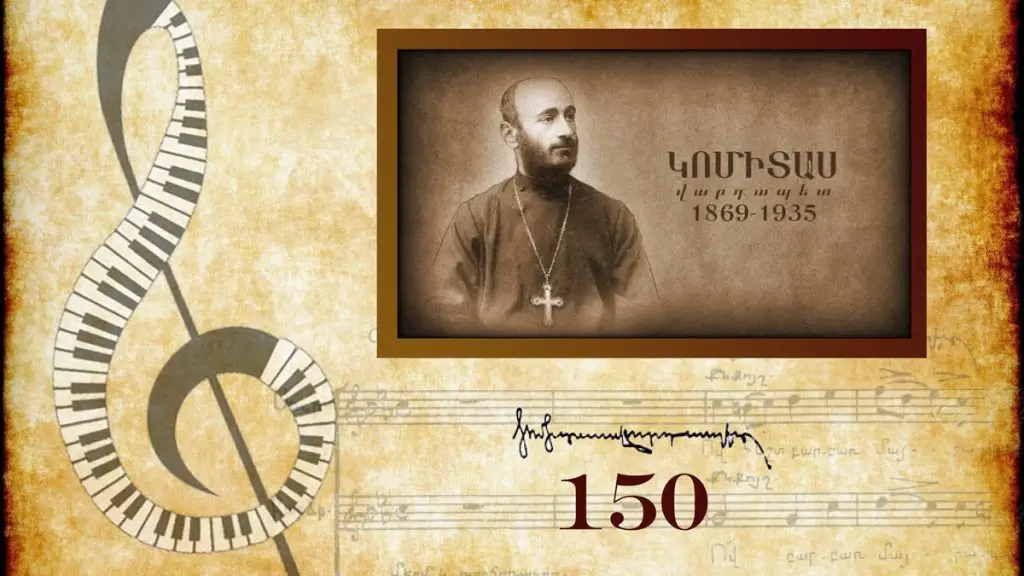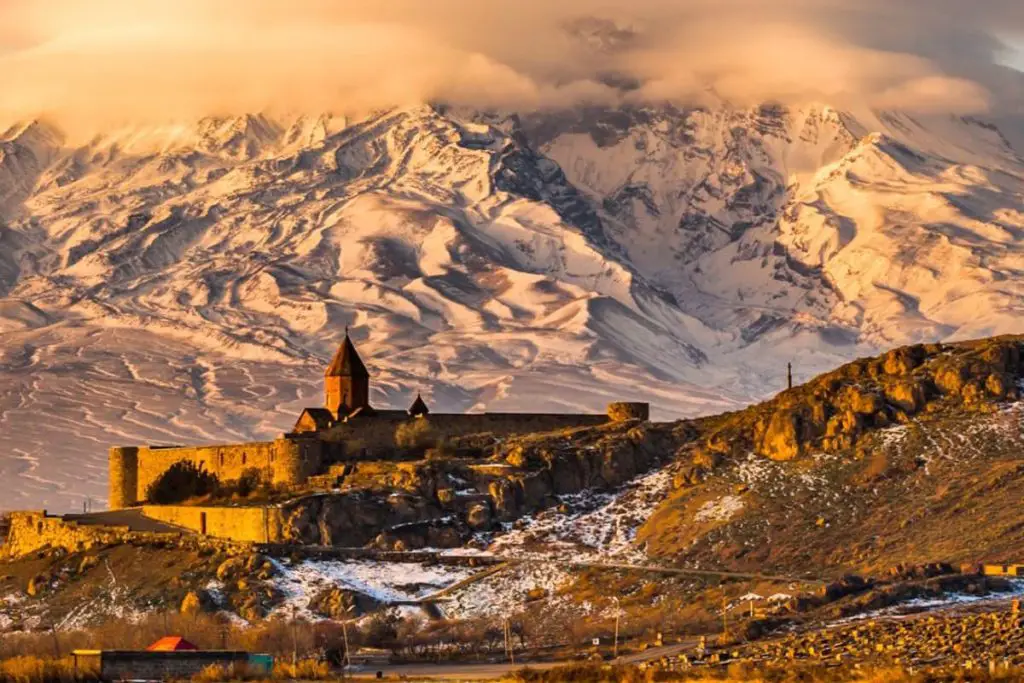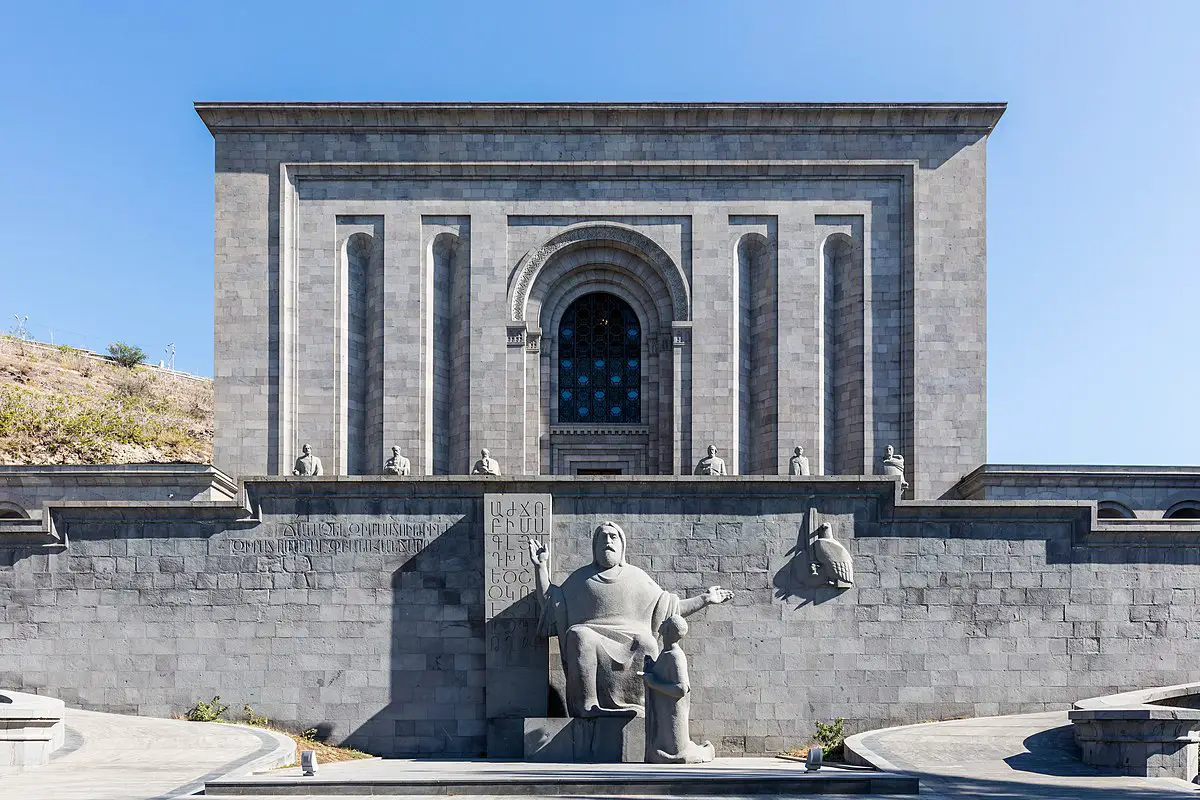Armenia is home to numerous museums that showcase the rich cultural and historical heritage of the country. As of 2021, there are approximately 120 museums in Armenia, which cover a wide range of topics and interests, including archaeology, art, history, and ethnography.
Here are 10 significant museums in Armenia:
- Matenadaran – The Mesrop Mashtots Institute of Ancient Manuscripts: This museum houses a vast collection of ancient Armenian manuscripts, including religious and secular texts, dating back to the 5th century.
- Armenian Genocide Museum-Institute: This museum is dedicated to the memory of the victims of the Armenian Genocide and features exhibits and archives related to the events of 1915.
- History Museum of Armenia: This museum showcases the history of Armenia from prehistoric times to the present day, with exhibits featuring artifacts, documents, and artwork.
- Erebuni Museum: This museum is dedicated to the ancient city of Erebuni, the predecessor to modern-day Yerevan. The museum features exhibits and artifacts from the city’s history, including ancient pottery, jewelry, and tools.
- Armenian National Museum of Art: This museum houses a vast collection of Armenian artwork, including paintings, sculptures, and ceramics from the medieval period to the present day.
- Sergei Parajanov Museum: This museum is dedicated to the life and work of Sergei Parajanov, a renowned Armenian filmmaker, and artist. The museum features exhibits showcasing Parajanov’s artwork, film sets, and personal belongings.
- Armenian Museum of Folk Art: This museum features a collection of traditional Armenian crafts, including textiles, woodcarvings, pottery, and metalwork.
- Yeghishe Charents Museum of Literature and Arts: This museum is dedicated to the life and work of Yeghishe Charents, a renowned Armenian poet and writer. The museum features exhibits showcasing Charents’ manuscripts, letters, and personal belongings.
- Armenian Ethnographic Museum: This museum features exhibits showcasing the cultural heritage and traditions of the Armenian people, including clothing, household items, and musical instruments.
- Geological Museum and Art Gallery: This museum showcases the geological history of Armenia, including exhibits featuring minerals, fossils, and geological formations. The museum also features an art gallery showcasing contemporary Armenian artwork.
A Diverse variety of Museums in Armenia, and here are the main types:
- History Museums: These museums showcase the history of Armenia, from prehistoric times to the present day. They often feature exhibits on ancient civilizations, archaeological finds, and the country’s political and cultural history.
- Art Museums: Armenian art museums feature a variety of artwork, including paintings, sculptures, and ceramics, dating from the medieval period to the present day. Many of these museums also showcase contemporary Armenian artists.
- Science Museums: Science museums in Armenia often focus on natural history, geology, and astronomy. They feature exhibits on the flora and fauna of Armenia, as well as the country’s unique geology and natural formations.
- Cultural Museums: Cultural museums in Armenia showcase the traditions and customs of the Armenian people, including music, dance, and folk art. These museums often feature exhibits on traditional Armenian clothing, household items, and musical instruments.
- Memorial Museums: Memorial museums in Armenia commemorate significant events or figures in Armenian history. The Armenian Genocide Museum-Institute is an example of a memorial museum, as it is dedicated to the memory of the victims of the Armenian Genocide.
- Specialized Museums: There are also several specialized museums in Armenia, including the Matenadaran, which houses ancient Armenian manuscripts, and the Sergei Parajanov Museum, dedicated to the life and work of the Armenian artist and filmmaker.
Must know about museums in Armenia before visiting them
When visiting museums in Armenia, it is important to note that many of them are closed on Mondays, and some may have varying hours on weekends. It is also a good idea to check if the museum requires advance reservations, as some museums may limit the number of visitors.
Visitors should also be aware of the dress code in some museums that require conservative clothing to be worn. Photography may also be restricted in some museums, so it is best to inquire beforehand.
Where are the main museums of Armenia Located?
The majority of these museums are located in the capital city, Yerevan. It has over 70 museums, including the Matenadaran Museum of Ancient Manuscripts, the Sergei Parajanov Museum, and the Armenian Genocide Museum and Institute. The rest are in other cities and regions of Armenia. The most significant are Archaeological museums.
The Erebuni Museum, located in the capital city, is another must-visit museum that exhibits artifacts from the ancient city of Erebuni, founded in 782 BC. The National Museum of Armenian History and the History Museum of Armenia are two of the most prominent museums in Yerevan that display a vast collection of archaeological artifacts dating back to prehistoric times.
One can see the rich collection of metal objects, ancient pottery, and bronze and stone tools, providing a glimpse of the country’s past.
Other cities like Gyumri, Vanadzor, and Dilijan also have museums that showcase the cultural and historical heritage of the country. The Garni Temple and Geghard Monastery, located outside Yerevan, are two of the most popular tourist destinations in Armenia that are worth visiting for their archaeological significance.
List of 5 museums in each major city in Armenia:
| Yerevan: | Matenadaran – The Mesrop Mashtots Institute of Ancient Manuscripts |
| Armenian Genocide Museum-Institute | |
| History Museum of Armenia | |
| Armenian National Museum of Art | |
| Sergei Parajanov Museum | |
| Gyumri: | Museum of National Architecture and Urban Life |
| Museum of Fine Arts | |
| Gyumri City Museum | |
| Dzitoghtsyan Museum of Social Life and National Architecture | |
| K. Abovian House-Museum | |
| Vanadzor: | Vanadzor Fine Arts Museum |
| Lori Regional Museum of Local Lore | |
| Museum of Stepanavan Dendropark | |
| Memorial Museum of the National Hero Garegin Nzhdeh | |
| Mikayel Nalbandyan House-Museum | |
| Masis: | Masis Museum of Local Lore |
| Gevorg Emin House-Museum | |
| Bagratid Archaeological Museum | |
| Art Museum of the Masis Municipality | |
| Masis Agricultural Museum | |
| Ashtarak: | Ashtarak Historical and Ethnographic Museum-Reserve |
| V. and H. Ter-Ghevondyan Museum | |
| Art School Museum of Ashtarak | |
| Museum of the Ashtarak Diocese of the Armenian Apostolic Church | |
| Stepanakert Art Gallery and Museum of Ashtarak |
Discovering the Unique Artifacts and Exhibits of Armenian Museums
Armenian museums are home to several unique artifacts and exhibits that are rarely found in other parts of the world. Here are a few examples:
- Ancient Armenian Manuscripts: Armenian museums, such as the Matenadaran, house some of the world’s oldest and most well-preserved ancient manuscripts. These manuscripts include religious and secular texts, illuminated manuscripts, and illustrated books dating back to the 5th century.
- Khachkars: Armenian museums feature a unique type of Armenian art known as Khachkars, or cross-stones. These intricate stone carvings are unique to Armenian culture and are often found in churches, monasteries, and cemeteries throughout the country.
- Armenian Genocide Memorabilia: The Armenian Genocide Museum-Institute in Yerevan houses a collection of artifacts and personal belongings of the victims of the Armenian Genocide. These items include photographs, letters, clothing, and other personal effects, providing a rare and intimate look into the lives of those affected by the tragedy.
- Medieval Armenian Art: Armenian museums, such as the Armenian National Museum of Art, feature a unique collection of medieval Armenian art, including illuminated manuscripts, sculptures, and ceramics. This artwork showcases the distinctive style and artistic traditions of Armenia during this period.
- Sergei Parajanov’s Artwork: The Sergei Parajanov Museum in Yerevan features a collection of artwork and film sets created by the renowned Armenian artist and filmmaker Sergei Parajanov. His work is characterized by its surreal, dreamlike quality and unique use of color and texture, making it unlike anything else in the world of art and cinema.
Exploring the Top Museums of Armenia: From Ancient Manuscripts to Contemporary Art
Armenia is a country rich in history, culture, and art, and its museums are a testament to this heritage. From ancient manuscripts to contemporary art, the museums of Armenia offer a fascinating insight into the country’s past and present.
Among the most significant museums in Armenia are the Matenadaran, which houses a vast collection of ancient Armenian manuscripts, the Armenian Genocide Museum-Institute, dedicated to the memory of the victims of the Armenian Genocide, and the History Museum of Armenia, which showcases the country’s history from prehistoric times to the present day.
Other notable museums include the Armenian National Museum of Art, the Sergei Parajanov Museum, and the Armenian Museum of Folk Art. Together, these museums offer visitors a unique opportunity to explore the diverse cultural and artistic heritage of Armenia.
Museums in Armenia that are dedicated to famous people:
- Hovhannes Tumanyan House-Museum: This museum is dedicated to the life and work of Hovhannes Toumanyan, one of the most famous Armenian writers and poets.
- Alexander Tamanyan Museum: This museum is dedicated to the life and work of an Armenian architect who designed the city and many buildings in Yerevan and other parts of Armenia, including the famous touristic site, the Cascade.
- Martiros Saryan House-Museum: This museum is dedicated to a renowned Armenian painter known for his landscapes and still-life paintings.
- Yeghishe Charents Museum of Literature and Arts, dedicated to a famous Armenian poet and writer.
- Sergei Parajanov Museum: Dedicated to the life and work of the renowned Armenian artist and filmmaker known for his surrealist style and unique use of color and texture in his works.

Museums in Armenia dedicated to Musicians
- Komitas Museum-Institute: This museum is dedicated to the life and work of Komitas, a famous Armenian composer, musicologist, and ethnomusicologist. The museum features exhibits showcasing Komitas’ manuscripts, personal belongings, and musical instruments.
- Sayat Nova House-Museum: This museum is dedicated to the life and work of Sayat Nova, a famous Armenian troubadour and poet. The museum features exhibits showcasing Sayat Nova’s manuscripts, personal belongings, and musical instruments.
- Arno Babajanyan House-Museum: This museum is dedicated to the life and work of Arno Babajanyan, a famous Armenian composer and pianist. The museum features exhibits showcasing Babajanyan’s manuscripts, personal belongings, and musical instruments.
- Armen Tigranian House-Museum: This museum is dedicated to the life and work of Armen Tigranian, a famous Armenian composer and conductor. The museum features exhibits showcasing Tigranian’s manuscripts, personal belongings, and musical instruments.
- Avet Terterian House-Museum: This museum is dedicated to the life and work of Avet Terterian, a famous Armenian composer. The museum features exhibits showcasing Terterian’s manuscripts, personal belongings, and musical instruments.
Significant Religious Museums in Armenia
The country has a rich religious history and cultural heritage. One of the most significant religious museums in Armenia is the Mother See of Holy Etchmiadzin Museum, which is located on the grounds of the Mother Cathedral of Holy Etchmiadzin, the spiritual center of the Armenian Apostolic Church. The museum houses a vast collection of religious artifacts, including ancient manuscripts, cross-stones, and liturgical items such as chalices, censers, and processional crosses.
Another significant religious museum in Armenia is the Khor Virap Monastery Museum, located near the Turkish border in the Ararat region. The museum is dedicated to the history of the monastery, which is one of the most important pilgrimage sites in Armenia and is known for its stunning views of Mount Ararat.

Most Religous Artifact in Armenia
Regarding the most significant religious artifact in Armenia, it is difficult to choose just one, as there are many important religious artifacts housed in Armenian museums.
However, one of the most revered religious artifacts in Armenia is the Holy Lance, or Geghard, which is believed to have been used to pierce the side of Jesus during his crucifixion.
The Holy Lance is currently housed in the Treasury of the Mother Cathedral of Holy Etchmiadzin, and is considered one of the most important relics of the Armenian Apostolic Church.

